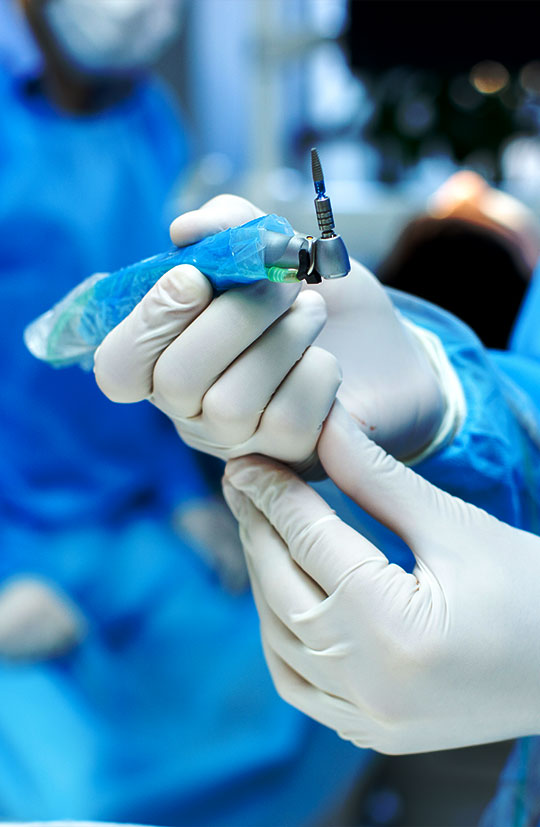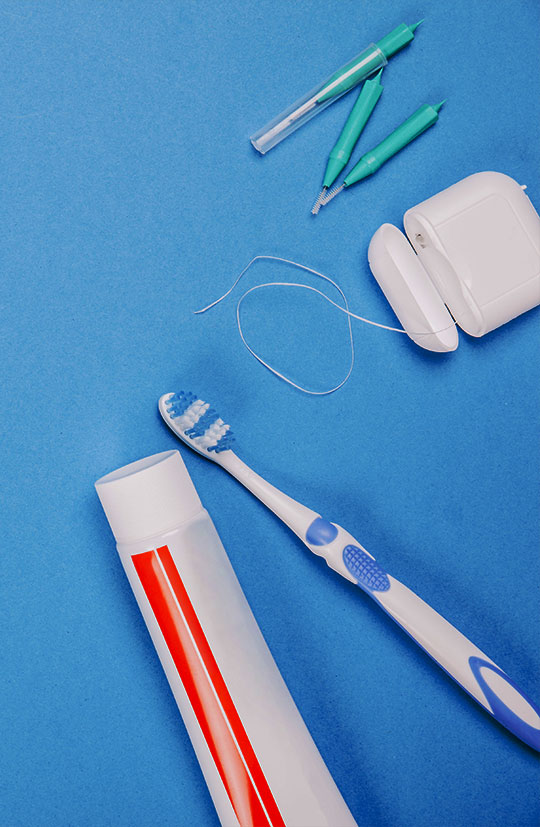Therapies and treatments
In our office is possible to ask for the following therapies and treatments:
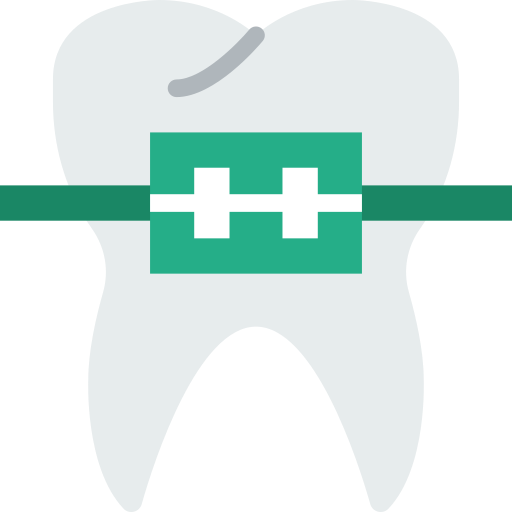
ORTHODONTICS
Orthodontics, more exactly orthognathics, is that branch of dentistry that deals with the restoration of the malformations of the higher and lower maxillary (mandible) and, in particular, of the anomalies in the position of the teeth and of the damage they cause to facial aesthetics and to the respiratory, masticatory and phonatory functions.
Orthodontic practice basically consists of two types of therapy that are often consequential, such as functional mobile orthodontic therapy and fixed orthodontic therapy, but also takes advantage of surgical therapies, of bio-mechanical therapies, of dental-surgical treatments of impacted and transposed teeth, of adult and pre-prosthetic orthodontics and of restraints.
Orthodontics aims at preventing and fix these anomalies by keeping or bringing back the masticatory organs and the facial profile to the right position, thus improving the masticatory function, facial aesthetics and the smile, as well as the respiratory and pronunciation functions.
On this subject, Blasi Dental Office has long been cooperating with Dr. Anna Gentili, specialised in orthognathics, in order to intervene in case of problems with the alignment of teeth and malocclusions.
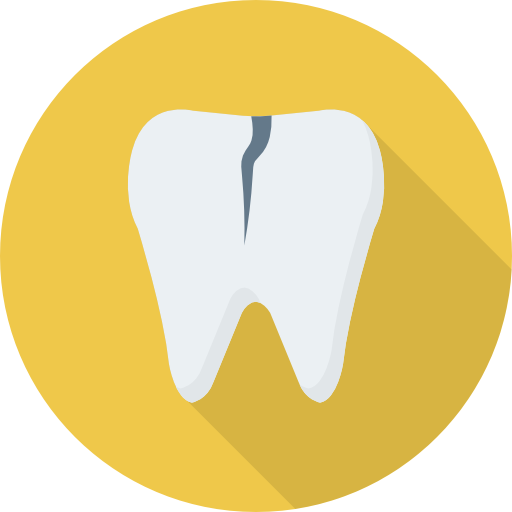
CONSERVATIVE DENTISTRY
Conservative dentistry is that branch of restorative dentistry that deals with the prevention and the treatment of inborn and acquired dental trauma.
Modern conservative dentistry is based on the concept of minimal invasion, it consists in removing only the decayed tissue and replacing it with restorative material, which is tied directly to the healthy tissue. In the last few years, the mixtures of silver (which needed an extensive preparation) have been almost completely replaced by composites, that are completely non-toxic and aesthetic materials. Furthermore, it is fundamental to create a good prevention program in order to avoid the return of cavities. This program should include dental hygiene sessions and periodic checkups, professional and domestic fluoride treatments, detailed instructions to reach a good control of the domestic bacterial plaque and diet recommendations.
As for children, conservative dentistry includes the sealing of the interdental grooves, which aims at isolating the dental grooves and creating a tough barrier against bacteria. This treatment poses no risk for the child, is non-invasive and completely painless. The materials used ensure top safety as well.
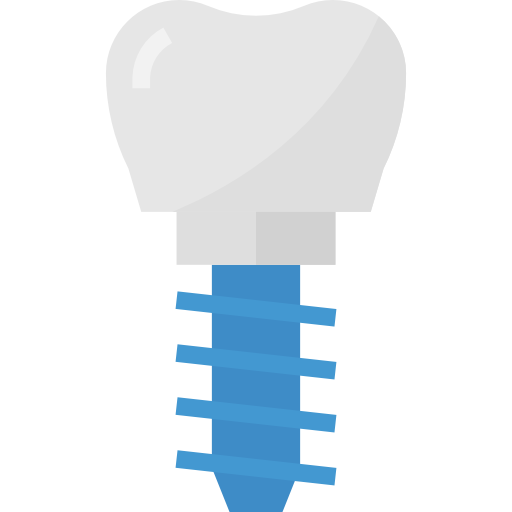
IMPLANTOLOGY
Implantology is a branch of dentistry dealing with the procedure of anchoring to the bone artificial titanium roots in order to replace missing teeth. These implants, which may support a single tooth, a group of teeth or a complete full-arch prosthesis, help the masticatory function and improve your daily comfort.
When the condition of the patient allows it, post-extraction implants may be inserted and, more rarely, immediate implants (the implant is placed at the same time as the natural tooth is extracted). Once in place, the implants firmly anchor themselves to the bone through a biological connection know as “Osseointegration” (Branemark,1965). Only when the osseointegration is completed it is possible to load the implant.
The procedure used to load the implant influences the timing of the operation.
Today “Guided Surgery” allows minimally invasive surgeries: by planning the placement of the implant with an extremely accurate software it is possible to shorten the postoperative course and dramatically reduce the pain.
New procedures such as “All on 4” and “All on 6” have proven to be very effective in reducing the duration of the surgery, the stress felt by the patient, as well as the economic burden. These procedure, which combine guided surgery and immediate implants, allow the rehabilitation of the entire dental arch with fixed teeth in 24 hours, inserting only 4 or 6 implants.
Thanks to these innovative procedures, patients can have a full implant with a temporary prosthesis in a few hours.
It is important to emphasise that, while immediate implants are safe, they have lower success percentage than deferred loading implants.

ORAL SURGERY
Oral surgery deals with operations aiming at restoring biological/anatomical situations that are problematic and, sometimes, irreversible.
There are many procedures that concern the oral cavity and that can be defines as “surgical”. Examples of oral surgery are: dental extraction, periodontal operation, implant placement and osseous regeneration, frenectomy, apicectomy, orthodontic surgery.
The prospect of a surgical intervention in the mouth usually sparks fear and anxiety. But today, oral surgery makes use of innovative techniques (laser, anaesthesia, sedation) that make these operations almost painless and is going toward a minimally invasive approach that aims at minimising postoperative complications for the patient.

PERIODONTOLOGY
Periodontology is a branch of dentistry dealing with the pathologies that concern the tissues sustaining the tooth like gums and bones. These inflammatory pathologies (know as periodontal diseases) are often degenerative, if left unchecked they may bring about the destruction of the tissues surrounding the teeth and, in some cases, the loss of the teeth themselves. When oral hygiene is neglected, the bacteria that inhabit the oral cavity form the so-called dental plaque, where pathogenic substances multiply.
First, the toxins produced cause gingivitis, which manifests itself with bleeding during teeth brushing. If gingivitis persists for a long period, the inflammation may extend from the gums to the periodontal apparatus (periodontal disease), causing the destruction of the periodontal fibres and of the alveolar bone that supports the teeth. Periodontal disease is an infection of the periodontal tissues that causes the formation of periodontal pockets, gums bleeding, dental mobility, abscesses and suppuration, and eventually the loss of one or more teeth. At this point, in order to completely restore the masticatory functions it is necessary to resort to implantology.
However, if diagnosed soon enough, this process is reversible. Even in the most serious cases, where regenerative therapy of the bone may be needed, with a specific treatment and with an adequate maintenance it is possible to stabilise and monitor the periodontal disease, thus preventing its rapid degeneration.
What may favour the insurgence of periodontal diseases?
Here is a list of the factors that may favour the insurgence of periodontal diseases:
Lack of oral hygiene: we recommend more susceptible patients, that have thin periodontal tissues or have a genetic predisposition, to use a focused program of dental hygiene, both at home and in the dental hygiene office.
On the other hand, we recommend patients to undergo oral hygiene sessions to remove plaque and tartar, every six or twelve months.
-Genetics: there are patients that suffer from periodontal disease even if the keep a perfect oral hygiene, while there are patients that have healthy periodontal structures even with high quantities of tartar and plaque.
-Smoke: people smoking more than 10 cigarettes a day have an higher risk of developing periodontal disease than non smokers. Often, periodontal diseases in smoking patients evolves faster and has a more problematic course, due to resistance to the treatments. In fact, cigarette smoke contains toxins that facilitate the detrimental and inflammatory action of the bacteria.
-Stress: several scientific research have reported a correlation between stress and periodontal disease. It is know, indeed, that stress weakens the immune system.
-Systemic pathologies: some pathologies may interfere with the regular course of the disease, an example is uncompensated diabetes with high levels of glycaemia, but also some types of rheumatoid arthritis and inborn or acquired immunodeficiency disorders (like AIDS).
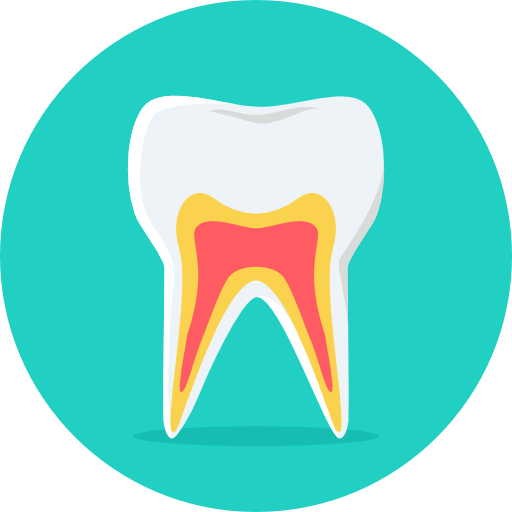
ENDODONTIC TREATMENT
Endodontics is the medical science that, in the field of dentistry, deals with the internal tissues of the tooth and with the pathologies and treatments connected to them. If these tissues, or the ones next to the root of the tooth, becomes inflamed or get damaged by cavities or traumas, the endodontic treatment can save the tooth.
What does endodontic treatment or “devitalization” mean?
The endodontic treatment is an ambulatory dental operation that is necessary when the dental pulp is in a condition of severe inflammation or infection and necrosis, with severe consequences like abscesses or chronic consequences like granuloma.
Many pathologies may alter the health of the dental pulp. In particular, dental cavity is the most common and frequent: it consists in the progressive destruction of the hard tissues of the tooth by micro-organisms originated from the bacterial plaque. A prompt intervention is necessary in order to prevent the hole produced by the cavity from expanding and spreading until the pulp is reached by the bacteria, causing irreversible transformations. Once this stadium is reached, the endodontic therapy, or root canal treatment or “devitalisation”, allows to keep the tooth and avoid its extraction.
Besides, dental pain is neither a reliable alert signal, neither an indicator of the severity of damage: the solution is a periodic dental checkup.
In what consists the treatment?
The endodontic treatment (also called root canal treatment, devitalisation or canalisation) consists in the removal of the inflamed and infected pulp, localised inside the tooth and covering the whole length of the roots, and in its replacement with a permanent filling in gutta-percha and canal cement, only after an adequate cleaning and melding of the radicular canals, and, lastly, in the reconstruction (conservative or prosthetic) of the damaged dental element.
The success percentage of a root canal treatment, if performed correctly, is very high. This percentage decreases, tough, in the case of endodontic re-treatment, namely when it is necessary to repeat the procedure due to a previous failure (caused by execution errors or anatomical complexities). Today, modern endodontics uses cutting-edge devices, such as innovative bio-materials and tools made by special alloys, for the diagnosis and treatment of these diseases.

CONSCIOUS SEDATION
Conscious sedation is a safe and painless anaesthetic technique aimed at leading a feeling of well-being and relaxation, thus facilitating the control of pain.
This treatment consists in the administration of a mix of oxygen and nitrous oxide that allows to sedate the patient by working upon the emotional components that cause anxiety and fear. The administration is performed through inhalation, using a nose mask, and makes the patient relax completely by making fear and anxiety go away. The patient remains perfectly conscious and sentient, but is filled by a sensation of lightness, calm and wellness, that lets him face any kind of operation with optimism and serenity. Fear and stress go away and become a sensation of pleasing confidence.
At the end of the session, the effect of the sedation disappears rapidly, and the patient is able to leave the office autonomously with his own means, being in a normal psycho-physical condition, as he was before the sedation. This treatment is appropriate for all the patients who fear dental operations, from dental hygiene to endodontics, conservative and surgical dentistry.
That is why, the Blasi Dental Office uses the conscious sedation system “Baldus Touch”, one of the most advanced systems in the sector of conscious sedation and a valid support to the everyday work of the dentist, and also a guarantee of comfort and safety for the patients.

LASER THERAPY
The laser is a concentrated beam of light with an high energetic power. For years, this technology has had distinct applications in the medical field. Regarding its application in dentistry, laser can easily cut or vaporise tissue, thus simplifying several operations. Thanks to its double effect, laser can sterilise and coagulate the affected area.
Given that the mouth is composed of different types of tissues, it is important to plan surgery accordingly and use a specific laser for each case. Regardless of the technique and laser used, the treatment, if carried out correctly, is safe and does not have any important side effect.
Furthermore, this procedure offers amazing advantages. Laser dental therapy is utterly painless: in fact anaesthesia is not needed (or, if needed, is very mild) and the typical post-surgery swelling is minimised, thus shortening the recovery time. Furthermore, since there are no cuts, stitches are not needed. Overall, it is safe to say that dental laser is a treatment aiming at improving the well-being and the comfort of the patient.
Still, the most relevant positive effects are of a medical nature and they concern especially the decontamination of the mouth. In fact, the laser treatment ensures a complete bacterial decontamination of the area.
The team of Blasi Dental Office uses dental laser in several therapies, such as urgent treatment of abscesses, cavity removal, redefinition of the gingival contour, removal of the inflamed tissue of the gingival pockets, decontamination of infected canals (in the endodontic treatments), oral surgery, dental whitening and dentine hypersensitivity.
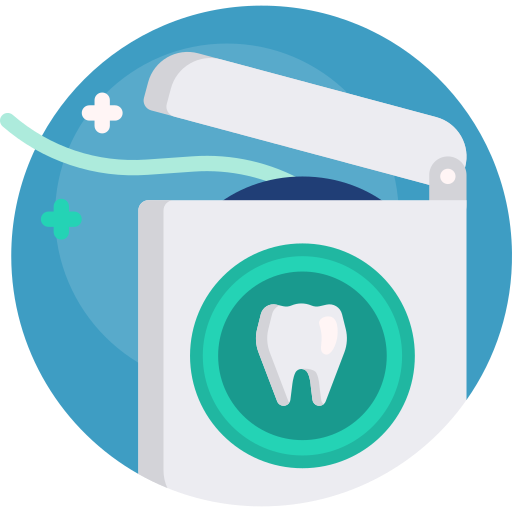
ORAL HYGIENE
Oral hygiene is the basis of dental prevention, namely the main tool that helps to prevent the most common oral pathologies (cavities, gingivitis, periodontal diseases).
Basic oral hygiene alone is not enough to perfectly “maintenance” your smile, both from the point of view of aesthetics and of wellness. In fact, many factors escape home-made hygiene and call for the intervention of an expert with the right tools. The intervention of an expert may prevent more serious consequences, such as gingival and periodontal pathologies.
In our office, dental hygiene is practised by highly qualified professional hygienists.
If the patient is healthy or is affected by gingivitis, professional hygiene has a therapeutic function limited to the monitoring of the oral health and to the treatment of the marginal gingival inflammation. In the case of periodontal patients the role of the professional hygienist is more relevant, since, besides offering the typical treatments, performs conservatory operations aimed at the stabilisation of the results reached after the active phase of the therapy.
Beyond the clinical procedure of removing the biological agents, teaching and motivating the patient to preserve his oral hygiene is a fundamental part of professional hygiene and maintenance: the patients will be thoroughly taught about how to reach excellent levels of daily hygiene at home.
The combination of professional monitoring and good daily hygiene are the basis to prepare patients to any surgical operation and to stabilise their oral health in the long run.
As a general rule, the ideal frequency to undergo a session of dental hygiene is six months, so twice a year. Yet, in the case of inflammation or other gingival problems, more frequent sessions may be useful.
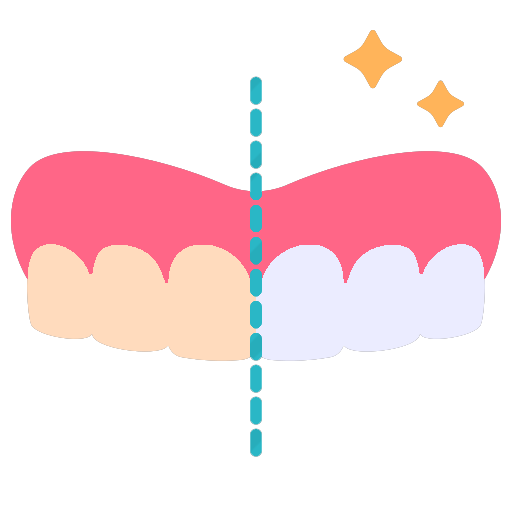
COSMETIC DENTISTRY
Cosmetic dentistry is that branch of dentistry that deals with the problems concerning oral harmony; it can intervene in several situations, while always preserving the masticatory function and with the goal of creating a perfect smile.
That is why, in the last few years, cosmetic dentistry has become more and more important. People go to the dentist office not only to deal with health problems, but also to improve their appearance and take care of themselves.
Depending on the needs of our patients, we provide different dental cosmetics treatments: from orthodontics to whitening, from veneers to reconstructions and restorations in ceramics.
DENTAL BLEACHING
A beautiful smile is the best form of introduction and a source of confidence and self-esteem. There is a widespread desire for white, shining teeth, and that is the reason why many patients want to get a professional dental bleaching.
The colour of the teeth is something variable and personal, which depends on genetic factors, general health, life and food habits. Dental bleaching is a cosmetic and conservative treatment that allows the restoring of the white colour of healthy teeth.
In order to get good results, it is necessary to put aside all the “do it yourself” methods that involve an unsupervised usage of acid agents. Dental bleaching is a treatment that, to be effective, needs professional tools and scientific expertise; in fact the supervision of a dentist and the safety of the technology used in a professional office, make the dental bleaching operation completely safe and actually effective.
Today, most of whitening products contain mainly hydrogen and carbamide peroxide in different dosages, depending on the treatment and the needs of the patient.
The whitening potential of the hydrogen peroxide can self-activate or be activated by photo-activation through laser or specific halogen or plasma lamps, light being a catalyst that can enhance the process.
After having adequately protected the gums, a gel containing hydrogen peroxide, in an average concentration of 35-40%, is applied on the dental surface: the peroxide penetrates deep into the dental enamel (which has a prismatic structure that can “open” in order to absorb whitening substances) without compromising its integrity.
The lower or higher concentration of the active ingredient and the duration of the exposure, determine the intensity of the outcome.
The whitening of devitalised teeth calls for a more specific procedure, consisting in an internal “cleaning” along the dental canal, with a peroxide solution.
In a professional session, the whitening treatment usually comes after an adequate dental hygiene and a checkup of the health of the oral cavity.
Whitening sessions can be performed at home, but a periodic monitoring by a dentist, who can intervene to fix possible irregularities by changing the mask or with specific sessions, is always necessary.
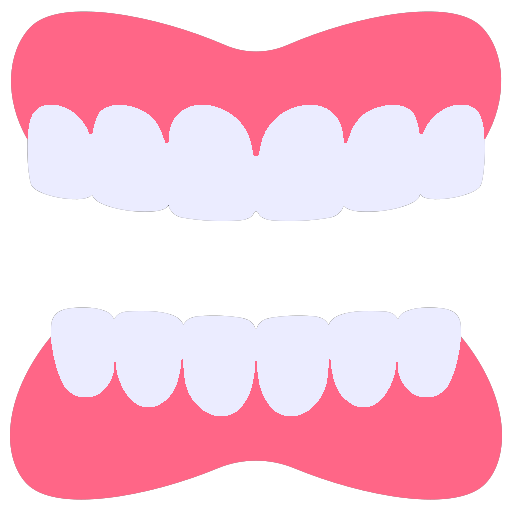
PROSTHESIS
Dental prosthesis is the branch of dentistry concerned with the treatment, diagnosis, rehabilitation and maintenance of the oral functions, of the comfort, of the aesthetics and of the health of patients with clinical conditions associated with the lack of one or more teeth.
Thus, it deals with the restoration and replacement of missing dental elements with prosthetic artifacts that fulfil functional and aesthetic needs.
The rehabilitation is performed through fixed prosthesis (veneers, crowns, bridges, inlays) or removable (denture, clasps).
As far as mobile prosthesis are concerned, their goal is to restore the masticatory and aesthetic function of patients that are either edentulous or have seriously compromised teeth. Mobile prosthesis may be total or partial, therefore they can replace a full arch or a part of it. They can be easily removed by the patient and are usually made of resin.
In the case of rehabilitation through fixed prosthesis, restoration on implants (fixed prosthesis on implant) or bridges supported by natural adjacent teeth (fixed prosthesis on natural teeth) may be used.
It is possible, therefore, to restore the masticatory function and an ideal occlusion permanently while meeting the patient’s aesthetic needs.

GNATHOLOGY
Gnathology is branch of medicine pertinent to dentistry that studies the physiology and the physiopathology of the cranial-cervical-mandibular system and deals with its clinic (prevention, diagnosis, treatment, rehabilitation). Focal point of this branch is therefore the mandible, with all its main functions, such as mastication, deglutition, phonation and also posture.
A gnathological checkup aims at maintaining or restoring the right balances and at eliminating the pain that might be caused by problems of the mandibular function. In same cases, the examination may be followed by supplementary exams and analysis, such as MIR, mandibular or panoramic kinesiography.
Gnathology is therefore strictly connected to the so-called TMD, that is painful manifestations of the temporomandibular articulation, such as migraine, dizziness, pain in the shoulders and neck, mandibular stiffness, weak bite, earache, tinnitus and bruxism.
Bruxism is a common condition consisting in the involuntary action of grinding your teeth in the first stages of sleep. If it persists, this condition may cause a levelling of teeth with possible exposure of the dentine, gingival and periodontal damages, alterations that burden the temporomandibular articulation.
These conditions can be treated with the bite: a silicon or resin plate that optimises the closure of the dental arches and restores their position. It is, therefore, a simple mask that facilitates the relaxation of the affected muscles and protects the teeth from deterioration.

